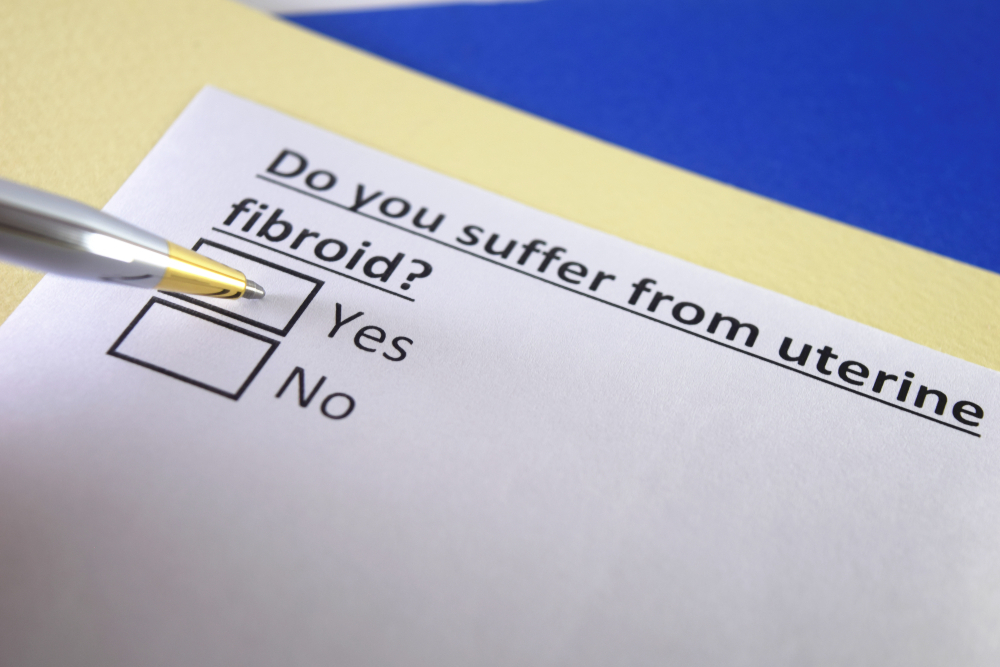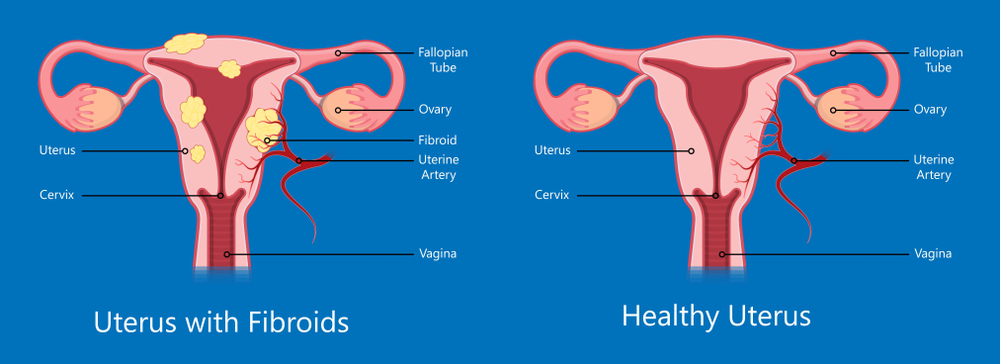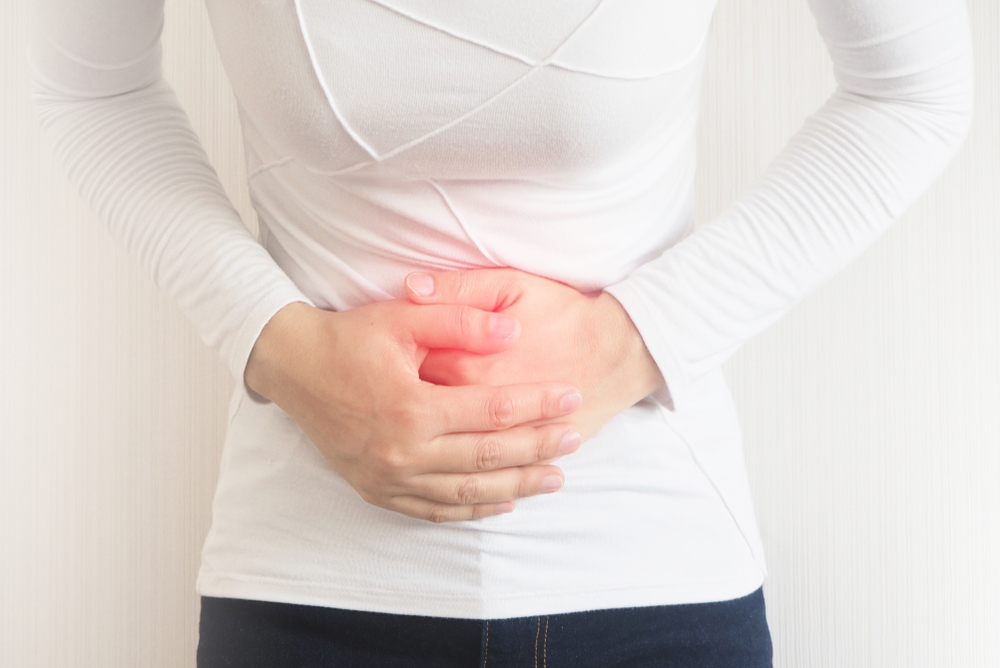Uterine fibroids are essentially noncancerous growths in your uterus that usually appear when the woman is in her childbearing years. Also known as myomas or leiomyomas, uterine fibroids are not linked to a raised risk of getting uterine cancer sometime in the future and rarely evolve into cancer.
Uterine fibroids may range in their size from being extremely miniature seedlings that are undetectable by the naked eye, to sturdy masses that may distort the size of your uterus and enlarge it. You could even have a single or multiple fibroids in your uterus. In some extreme cases, numerous fibroids could expand your uterus by a significant amount and it may reach your rib cage and could add to the weight.
A lot of women have had to manage and get uterine fibroids treated sometime in their lives. However, you may not be aware that you have uterine fibroids since they generally do not cause any symptoms. Your doctor would be able to discover these fibroids incidentally in a prenatal ultrasound or a pelvic exam. Here is a comprehensive guide on uterine fibroids that comprises everything you need to know:
Symptoms of uterine fibroids
A lot of women that have uterine fibroids may not experience any symptoms. However, in women that do, these symptoms may be influenced by the number, size, and location of fibroids.
In women who experience symptoms, some of the most common symptoms and signs of uterine fibroids may include:
- Leg pains
- Backache
- Constipation
- Difficulty in emptying the bladder
- Frequent urge to urinate
- Pelvic pain or pressure
- Menstrual periods that may last for more than a few days or a week
- Heavy menstrual bleeding
Rarely, a uterine fibroid could cause acute pain once it outgrows the blood supply, and may begin to die.
Uterine fibroids are typically categorized by where they are located, such as:
- Intramural fibroids develop in your muscular uterine wall.
- Subserosal fibroids are located in the outside wall of your uterus.
- Submucosal fibroids protrude right into your uterine cavity.
When should you visit a doctor?

You should typically make an appointment to visit your doctor as soon as possible if you experience:
- Persistent pelvic pain that you can’t seem to get rid of
- Painful, prolonged, and heavier than usual periods
- Spotting between your periods
- Bleeding between periods
- Difficulty in urinating and emptying your bladder
- Anemia or unexplained low count of red blood cells
You should seek prompt and immediate medical care once you suffer from sharp pelvic pain or severe vaginal bleeding that starts suddenly.
Causes of uterine fibroids
Most of the time, the causes of uterine fibroids cannot be clearly defined due to a lack of research.
However, some causes result arises from clinical and research experience and point to some factors, such as:
- Genetic changes: Many uterine fibroids include modifications in genes that are different from those in standard uterine muscle cells and genes.
- Hormones: Progesterone and estrogen are the two hormones that facilitate the growth of the lining of your uterus during every menstrual cycle. This is done to prepare for pregnancy and appears to promote the development of uterine fibroids. Uterine fibroids generally contain more progesterone and estrogen receptors than a typical uterine muscle cell. These fibroids can start to shrink right after menopause since the hormone production in the female body starts to decrease.
- Other growth factors: Other growth factors and substances can help your body in maintaining tissues. Research shows that these substances like insulin resembling growth factors can also affect the growth of uterine fibroid.
- Extracellular matrix (ECM): Extracellular matrix is a material that can make the cells in your uterine wall stick together, such as mortar between bricks. Extracellular matrix gets increased in the case of uterine fibroids and can even make them fibrous. This can also store other growth factors and cause typical biological changes easily in your cells.
Many doctors and medical specialists believe that the development of uterine fibroids from specific stem cells in your uterus takes place in the myometrium of the smooth muscular tissue. A single stem cell starts to divide repeatedly, ultimately creating a rubbery, firm mass that is different biologically from nearby tissue.
These growth patterns resulting in uterine fibroids can vary. Uterine fibroids might begin to grow rapidly or slowly. They can even stay the same size. Many uterine fibroids can go through specific growth spurts while others may even shrink all on their own without any particular treatments or medication. A lot of uterine fibroids that developed during your pregnancy can start to shrink or even disappear right after your pregnancy when the size of your uterus goes back to normal.
Risk factors of uterine fibroids
There are some typical known risk factors when it comes to the development of uterine fibroids. These risk factors are not just limited to gender and reproductive age.
Some typical risk factors that could impact the development of a uterine fibroid are:
- Race: Even though all women who are in the reproductive age are equally likely to develop fibroids, research shows that black women are in general more likely to develop uterine fibroids as compared to women who belong to other racial groups. Additionally, black women typically develop uterine fibroids when they are in their younger ages. These uterine fibroids are also larger than the rest and can develop in more numbers. The symptoms seen in black women, in general, are also noticed to be more severe than those of other racial backgrounds.
- Heredity: Since genetics can play a significant role in the development of uterine fibroids, if your sister or mother had uterine fibroids, this means that you are in general at an increased risk of acquiring them.
- Other factors: Some other factors have been linked to a higher risk of developing uterine fibroids such as:
- If your period started at quite an early age
- If you suffer from a vitamin D deficiency
- If you are overweight and obese
- If you consume a diet that is higher in the concentration of red meat
- If your diet contains very few dairy elements, fruits, and green vegetables
- If you consume alcohol including light alcoholic beverages such as beer frequently.
Prevention of the development of uterine fibroids
Even though researchers and medical specialists continue to investigate the exact causes of uterine fibroids and tumors are, there is very little scientific evidence available right now on how you can prevent their development. Preventing the development of uterine fibroids might not be possible, however, only a very small percentage of such tumors are in the need of treatment and usually shrink and eventually disappear on their own.

However, if you make healthy lifestyle choices constantly starting from an early age, such as consuming green vegetables, eating fruits, and maintaining your healthy weight based on your body mass index (BMI), can go a long way in decreasing your risk of developing uterine fibroids. Also, a lot of the current research shows that if you use hormonal contraceptives, you are essentially lowering the risk of the development of uterine fibroids in the long run.
Treatment of uterine fibroids
How are uterine fibroids detected and diagnosed?
Uterine fibroids are often found incidentally when you are getting a regular pelvic exam. Your medical practitioner might feel some irregularities present in the form of your uterus, and the uterine wall showing that there may be some uterine fibroids present.
If you suffer from some symptoms and signs that may suggest uterine fibroids, generally your doctor will order one of these tests to confirm its presence:
- Ultrasound: If your doctor needs to confirm the presence of uterine fibroids, your doctor might ask you to get an ultrasound. Ultrasound is a completely safe procedure that uses sound waves and your medical practitioner gets a photograph of the insides of your uterus. An ultrasound can go a long way in confirming their diagnosis and it can help in mapping out and measuring uterine fibroids.
A doctor or a medical technician moves the transducer or an ultrasound device transabdominal, over your abdomen, or transvaginally, places it in your vagina, and obtains the internal pictures of your uterus. A lot of doctors suggest getting an ultrasound regularly to maintain your health and to detect any growth or development at an early age.
- Lab tests: If you are experiencing abnormal menstrual bleeding such as heavy bleeding, irregular bleeding, or spotting in between your periods, your doctor might want you to take other lab tests to examine potential causes. Generally, these tests may include a CBC or a complete blood count test to see if you are suffering from anemia due to regular blood loss in your irregular periods. Some other blood tests can help your doctor in ruling out thyroid problems or bleeding disorders.
Some traditional procedures to remove uterine fibroids
Once your doctor has confirmed the presence of uterine fibroids, they may suggest either treatment to shrink them or traditional surgical procedures to remove them completely.

Some traditional surgical procedures that are most commonly used are:
- Abdominal myomectomy: If you have developed very deep fibroids, very large fibroids, or multiple fibroids, your doctor might recommend getting an abdominal myomectomy or an open abdominal surgery to help in removing the fibroids. This is also a suitable alternative to getting a hysterectomy. However, if you want to have children in the future, a hysterectomy can affect your future fertility. Getting an abdominal myomectomy can be a viable option.
- Hysterectomy: This is a surgery that removes your uterus altogether. It is the only proven enduring solution against the development of uterine fibroids. The only problem with a hysterectomy is that it will essentially end your ability to have any more children. Also, you may elect to get your ovaries removed as well, and then the surgery can bring on early menopause. In menopause, you may need to go on hormone replacement therapy. A lot of women who want to get their uterine fibroids removed might be able to decide to not get their ovaries removed.
Seedlings or tiny tumors may not get removed during treatments
If you get any other procedures apart from hysterectomy, you are at the risk of letting tiny tumors or seedlings stay in your uterus. The fact is that your doctor may be unable to find them during surgery since they are extremely small. These could then ultimately grow and generate symptoms that may need treatment. This problem is generally termed the recurrence rate. Your uterus may even develop new fibroids for which you might or might not need treatment.
Also, when you get some specific treatments such as robotic or laparoscopic myomectomy, MRI-guided (FUS) focused ultrasound surgery, or radiofrequency ablation may not be able to treat all the fibroids in your uterus when you get the treatment.
Conclusion
Uterine fibroids are growth areas in the walls of your uterus. These are non-cancerous and are not threatening. Since you may not always experience any signs and symptoms, you should ideally include a pelvic exam or an ultrasound in your routine medical checkup to keep an eye on any growth. The development of uterine fibroids is a common problem among women and their occurrence is not related to any specific reason. Since there is no way to link their development with particular causes, there is no way for you to avoid their development completely.
Based on the symptoms that you experience, their size and number as well as the location of their development, your doctor will be able to detect their presence, diagnose their development, and suggest a treatment plan. Even though the development of uterine fibroids is generally not harmful and doesn’t require surgery, in some cases, your doctor may prescribe getting a traditional surgical procedure. These procedures are completely safe and can also help in avoiding getting uterine fibroids again at a later time. You should schedule an appointment with your doctor in case you notice any signs and symptoms that are commonly related to the development of uterine fibroids.

